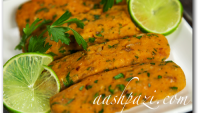History of food in Iran
Since the beginning of human civilization to present-day Iran, a series of peoples has invaded the region, exposing the area to new customs, beliefs, ideas, and foods, as well as bringing Iranian customs and foods back to their own home countries. The ancient Babylonians, Assyrians, Persians, Greeks, Romans, and Turks are just a few of the groups that have had an influence on Iranian culture and its cuisine.
Eggplant-StewAncient Persians took their own wares to all the corners of the world, in particular pomegranates, saffron and spinach, however the country also played host to much of the bargaining between the East and West. The bargained goods, including rice, lemons and eggplant now feature prominently in the national Iranian dishes.
Iranian cooking has much in common with Middle Eastern cooking, where wheat is a staple, lamb and poultry are well-utilized and yoghurt is common. A distinctly sour flavor is evident in most Iranian dishes, and may be achieved through the addition of lemon, pomegranates or sour oranges. The dishes of Iran are often time-consuming slow-cooked affairs.
What do Iranians eat? Due to the range of culinary traditions across the Iranian provinces, food in Iran is extremely diverse. Common to all the Iranian provinces however, is the fact that Iranian food tends to be both healthy and nutritious.
It includes a wide variety of foods ranging from Chelow Kebab (rice served with roasted meat), Khoresht (stew served Iranian rice: Ghormeh Sabzi, Gheimeh, Fesenjān, and others), Āsh (a thick soup: for example Āsh-e anār), Kuku (vegetable soufflé), Polo (rice alone or with addition of meat and/or vegetables and herbs, including Loobia Polo, Albaloo Polo, Sabzi Polo, Zereshk Polo, Baghali Polo and others), and a diverse variety of salads, pastries, and drinks specific to different parts of Iran. The list of Persian recipes, appetizers and desserts is extensive.
Kookoo-Sabzi Iranian-Ash Fesenjan-Stew
Kebab-most-famous-Iranian-food


